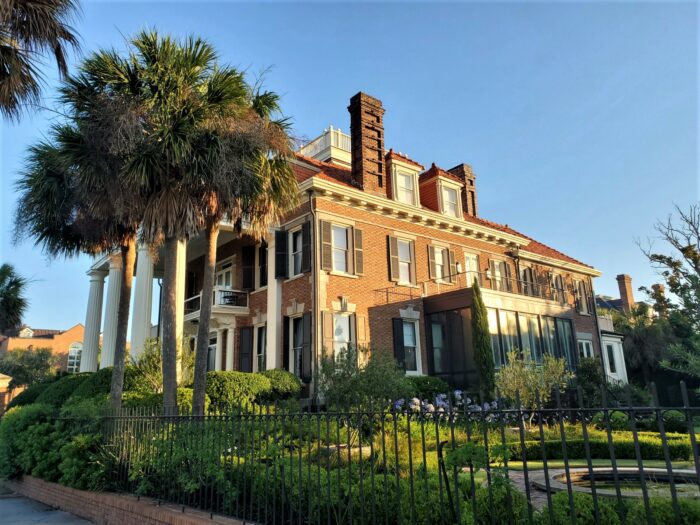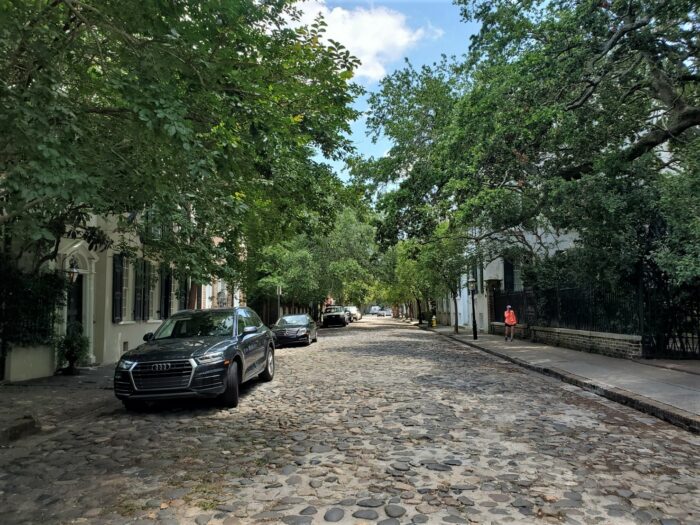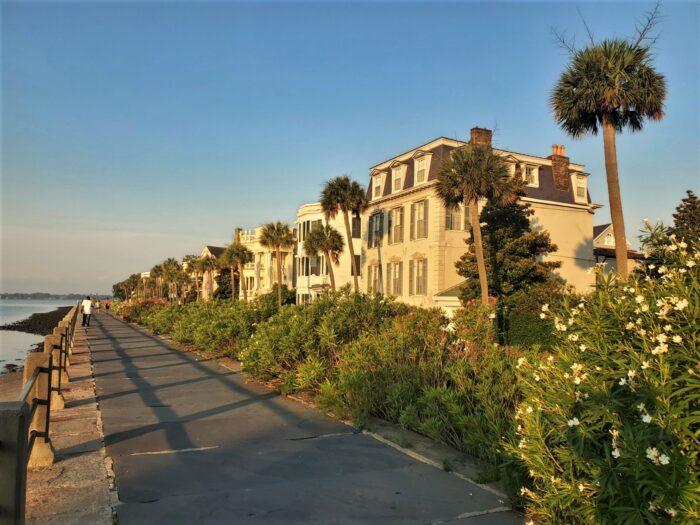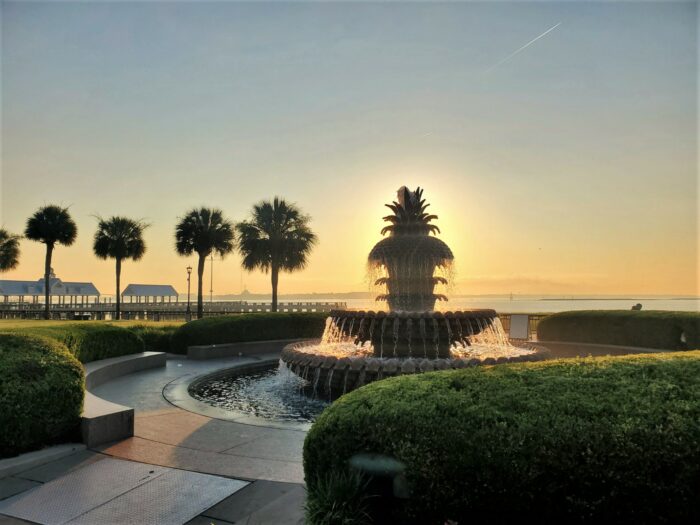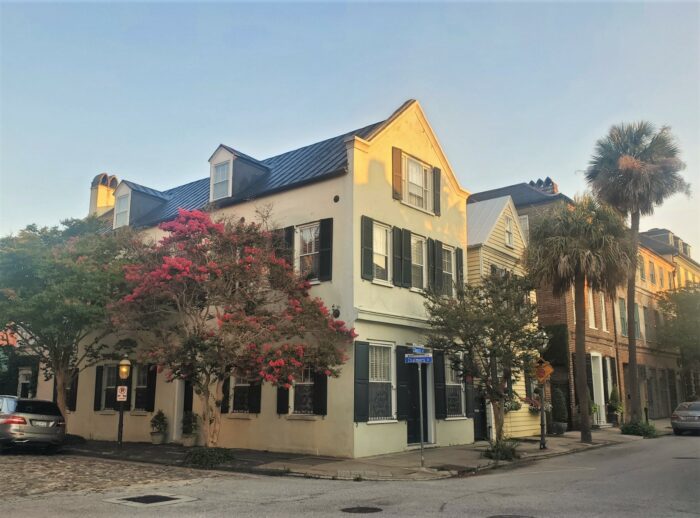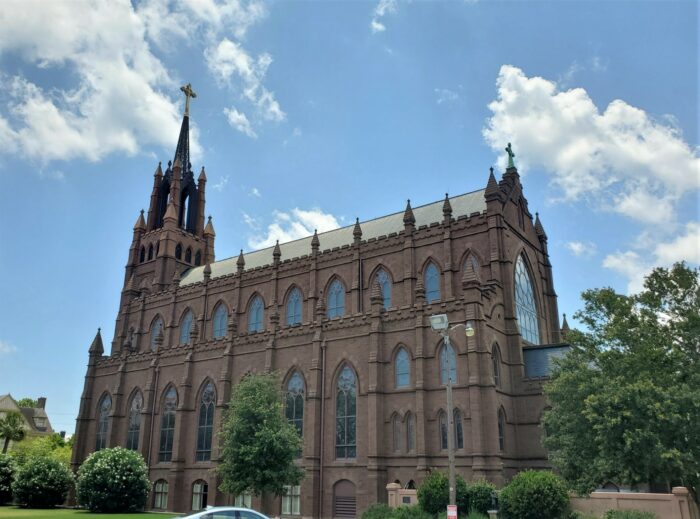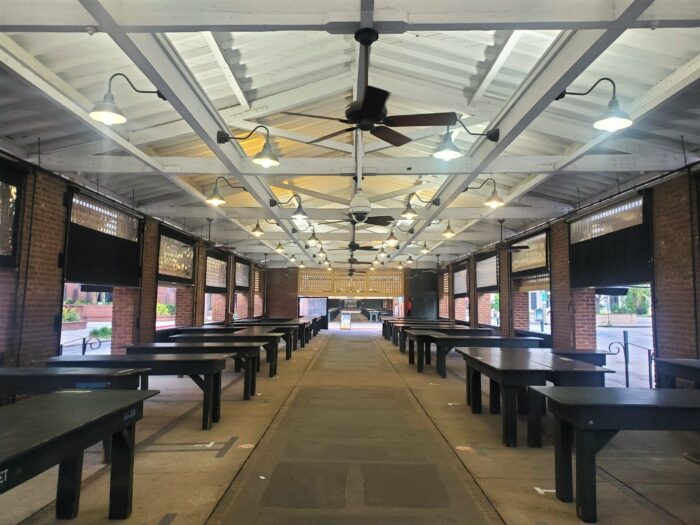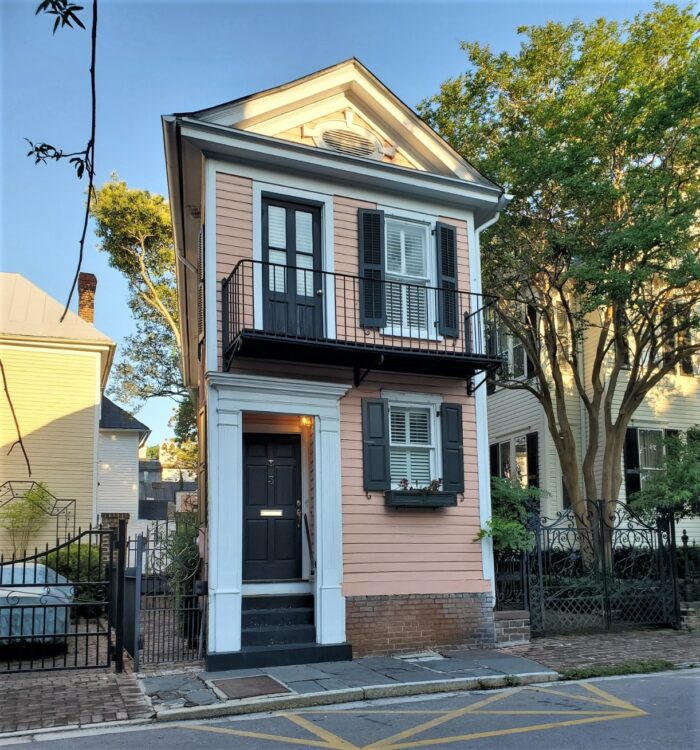The C. Bissell Jenkins House, built in 1913, was the first house constructed on Murray Boulevard — on the newly reclaimed land along the Low Battery.
Chalmers
Chalmers Street is one of eight active cobblestone streets in Charleston. The stones are not native to Charleston. They were used as ballast for empty trading ships coming to Charleston and were unloaded to make room for the material that was picked up, The cobbles were then used to pave the streets.
High Seawall
The High Battery is essentially a seawall with huge flagstones on top. The current version, completed in the 1850’s, is the third attempt at constructing a seawall that could withstand hurricanes and the tides.
Pineapples
The pineapple fountain in Waterfront Park is a favorite spot for many. Appropriately, the pineapple is a symbol of welcome and hospitability. Traditionally that was expressed two ways –1) the fruit would be used as a centerpiece at the dining table for parties (sharing of friendship), and 2) a fresh pineapple would be places on a gate post or speared on a fence to indicate someone had returned home or were receiving guests. Tasty!
Anson
On Anson Street, the eponymously named restaurant sports some pretty cool vertical flower pots.
Morning Light
This house, at the corner of Chalmers and Church Streets, is looking pretty good with the blooming crepe myrtle guarding its front door.
Brownstone Cathedral
The Cathedral of St. John the Baptist is the second brownstone cathedral on this Broad Street site. The original building burned down in 1861 and was named after St. John and St. Finbar.
City Market
Before the City Market turns into a crowded shopping extravaganza, it’s pretty peaceful in the early morning.
Little Pink House
This little pink house on King Street was built in 1904. Always eye-catching and charming.
Man and Nature
Charleston is a wonderful combination of manmade and natural beauty. Here a Great Blue Heron poses with the Cooper River Bridge dazzling in the background. Both are beauties!
- « Previous Page
- 1
- …
- 24
- 25
- 26
- 27
- 28
- …
- 188
- Next Page »
